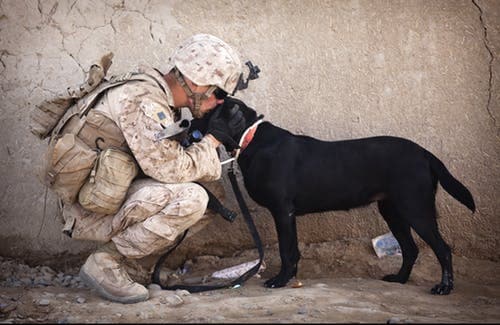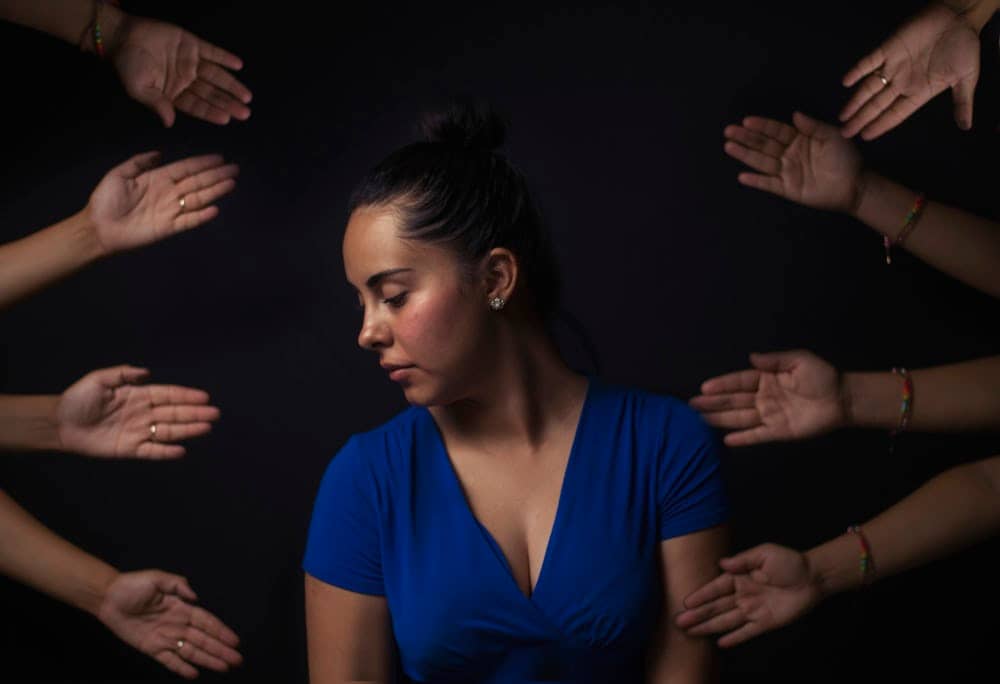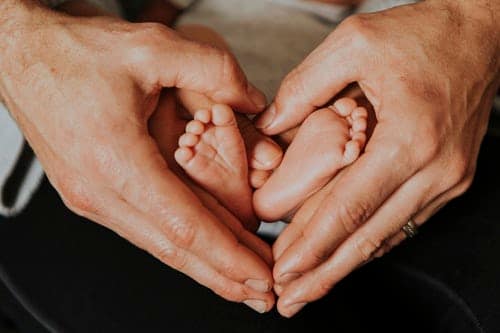As psychotherapists specializing in treating the impact of traumatic events and chronic adversity, we are often asked a number of questions about trauma, PTSD, and psychotherapy.
Here, we have compiled the most common of these questions in order to help you, the brave reader seeking help for yourself or someone you love, better understand the effects of trauma on us all, the similarities and differences between how we may respond to experiencing/witnessing traumatic events, what it takes to heal from their impact, and what you can expect in therapy.
Have you have ever wondered why, for instance, some people develop Post-Traumatic Stress Disorder after traumatic events and others do not? Do you worry if the panic, pain, shame, or nightmares will go away on their own or how long it would take? If you will ever feel safe again? Have you wondered what psychotherapy for healing from traumatic events looks like? Then read on, we are here to help! (This article is going to be long…we wanted to provide an exhaustive list of questions and answers, feel free to scroll down to the ones you are most interested in)

Q1: What is trauma and how does it differ from Post-Traumatic Stress Disorder (PTSD)
The Definition of Trauma
According to the latest edition of the Diagnostic and Statistical Manual of Mental Disorders (DSM-5), a traumatic event is an event or situation which may involve:
- death or the threat of death,
- serious injury, or
- sexual assault.
This definition is expanded, however, from past definitions. Nowadays, we know that a traumatic reaction can be experienced after more indirect exposure to traumatic events, such as:
- witnessing someone go through such event, or
- learning about a situation in which a loved one experienced violent or accidental death, or
- chronic exposure to or witnessing of distressing events, like through one’s job as a correspondent in a war-torn country, police officer or firefighter, is also recognized as trauma.
The Experience of Trauma
In previous editions, the DSM had also required that the event cause one significant feelings of fear or horror in order to qualify as trauma. However, we now know that this is not necessarily true, because traumatic events can also cause us to feel disconnected or dissociated from our bodies, emotions, and thoughts. They may also trigger incongruent emotional reactions (e.g. uncontrollable laughing), which may at the time seem inappropriate to the event, but are in fact not uncommon.
It is important to note, however, that the experience of trauma can be very subjective and personal. Often times, life events, even if they do not constitute a significant threat to our life, can be very traumatizing, for instance, the experience of a woman going through multiple cycles of IVF, where her body is exposed to constant changes, losses, and medical procedures; infidelity or going through a divorce; bullying at school; being in a war zone or losing someone there even if not directly exposed to combat, multiple attachment disruptions for both children and adults, chronic exposure to poverty and hardship.
For some statistics of the prevalence of traumatic experiences, visit our main page here
Trauma vs. PTSD
Trauma does not necessarily result in PTSD, there are many other sequelae, and one may experience depression, anxiety, panic, relationship difficulties, etc., even if the symptoms do not add up to a diagnosis of PTSD. Therefore, it may be beneficial to work with a therapist who works from a trauma-informed perspective and has received additional training in trauma work even if you don’t have a diagnosis of PTSD. They will be best equipped to see your symptoms in context and may think to ask you questions and address other symptoms that a non-trauma informed therapist may not think about, e.g. the impact of traumatic events on the body and nervous system, the experience of dissociation (e.g., feeling like you are not fully here, spaced out, as if the world is not real, or as if you are disconnected from yourself or your body). For more on dissociation and its connection to trauma, you can visit the International Society for the Study of Trauma and Dissociation.
That being said, PTSD is one possible outcome of experiencing a traumatic event. We prefer to think of it as a reaction to trauma which fails to normalize over time, even if the traumatic event is no longer happening. Namely, most people who experience a traumatic event will have a response to it. This response may involve hypervigilance, nightmares, anxiety, low mood, hyper alertness, negative thoughts and self-doubts, intense emotional reactions and even bodily symptoms such as tenseness, tightness, heart racing, etc. All of these constitute a normal response in abnormal circumstances! We all will have some or all of them (and more) if we are exposed to a traumatic event. This is why we do not diagnose PTSD immediately after trauma, because you are expected to experience the above. It is the body’s natural reaction to something so out of the ordinary, something so scary or upsetting, that it sends us into a survival mode-type reaction.
Q2: What are the signs and symptoms of PTSD? How do I know if I or someone I love has it?
You can think of PTSD as a combination of experiences, that can add up to feeling significant distress, which we then try to avoid at all cost. And, indeed, in many occasions, the cost is high. The general symptoms fall within several clusters. Please have in mind that you may not experience all of the symptoms in any given cluster. Only a few, usually one or two per cluster, are enough for a diagnosis.
Intrusive Symptoms Cluster
We call these symptoms of re-experiencing. They are internal experiences that feel as if they are keeping the memory of the trauma alive and our bodies and minds can lose track of time…as if the traumatic event is not in the past but in the present.
- Intrusive memories that are unwanted—these can be throughs, images, sensations that are brought up by some stimuli in the environment, or even sometimes seemingly out of nowhere. You find yourself thinking about what happened, even though you do not want to be. They are different from flashbacks in that you don’t lose awareness of where you are, and yet cannot easily redirect your attention to other thoughts.
- Flashbacks—you may feel like the traumatic event is happening to you over again. This may be a fleeting moment, when you see, hear, smell, or feel something and you are transported back to when the trauma occurred. Or it may be a longer episode in which you become disoriented and lose track of where you are, time becomes distorted, and you have to reorient yourself to your surroundings.
- Nightmares—whether they are a repetitive nightmare, in which the trauma plays out over and over again, or more general bad dreams that leave you feeling anxious, angry, panicky, or generally off kilter
- Emotional distress when reminders of the event are present—e.g. you become easily upset and have difficulty composing yourself again when any of the above happen, or when something in your environment reminds you of your trauma. For instance, if you experienced medical trauma, being in a hospital, or even watching a TV show that shows one can be upsetting.
- Physical reactivity—when thinking about the event or perceiving triggers in the environment, you may feel your heart rate and blood pressure increase, experience heart palpitations, feel suddenly hot or cold, feel your palms get sweaty, have difficulty breathing or breathing shallowly, feel your head suddenly get foggy or heavy, or even feel physical tension and pain in certain areas. For instance, many survivors of sexual assault experience significant pain and discomfort in the pelvic area, which may fluctuate in intensity.
Changes in arousal and reactivity
Think of these symptoms as your nervous system’s reaction to trauma. During a traumatic event, your body will most likely experience a physiological stress response. When we have PTSD, it is as if our bodies never fully returned to normal functioning and are constantly living in a state of increased stress, as felt in:
- Hypervigilance—constantly watching our back, scanning the environment for threats or cues that we may get hurt (both physically and emotionally)
- Increased startle response—for instance, having a startle reaction to sudden movements or loud sounds, that would be more intense than or last longer usual
- Engaging in risky behaviors—such as increased alcohol or drug use, reckless driving, increased spending, risky sexual behaviors, aggression and destructiveness
- Difficulty concentrating—mind may be preoccupied with worries or overwhelmed, feeling scattered
- Difficulty sleeping—either due to not being able to relax your mind and body enough, feeling unsafe to be in such a vulnerable state, or worrying about having nightmares
- Irritability or aggression—finding yourself more on edge, engaging in more verbal or even physical arguments, feeling more easily overwhelmed by people’s demands on you and wanting to crawl out of your skin
Changes in cognition and mood
This cluster of symptoms can be thought of as the negative changes in our thoughts and emotions that develop as a result of trauma.
- Global and general negative thoughts about yourself, others, or the world—for example thoughts that nobody can ever be trusted, that the world is all bad and hopeless, that you are not worthy of love or care. These are dangerous because they may subjectively feel true. For instance, if you experienced assault or abandonment, it may feel like nobody can ever be trusted. If you survived a natural disaster or witnessed atrocities of war, it may feel like the whole world and people in it are bad. But thinking in such absolute terms is a symptom of being traumatized and of having survived something very difficult, not an objective truth.
- Excessively blaming yourself or others for the trauma—this is especially prominent when the trauma is losing someone you care about. Our brains tend to look for rhyme or reason, for explanations and responsibility. It is easier to accept a world where we are in control, albeit blaming ourselves, than a world in which sometimes tragedies happen. We are also often raised to believe in a fair world, one in which good things happen to good people and bad things to bad people. While we may know from experience this is not always the case, in the aftermath of trauma, it is hard to reconcile this belief with something bad happening to us. As with the above point, excessive self-blame (or other blame) is a symptom of our whole being experiencing a conflict between what we have been taught and something highly abnormal and traumatic happening to us.
- Negative affect—frequently one or more of the following feelings: fear, horror, anger, guilt, shame; having difficulty pulling yourself out from those emotional states
- Anhedonia—loss or a decrease in positive affect. For instance, catching yourself in situations where you might think “this good thing happened, I should probably be feeling happy or joyful, or excited” but not being able to feel it
- Losing interest in activities you previously liked—similarly as above, not being able to get enjoyment out of things that you used to enjoy or difficulty finding the motivation to even try
- Forgetting some key parts of the traumatic event—feeling like you should be able to remember them, or maybe that if you really tried hard you could, but it is as if your brain is refusing to go there, or the time/scene is just lost in your memory
- Feelings of isolation—becoming increasingly withdrawn, feeling like you can’t be close to anyone, or to very few people, but even then keeping them at a distance
Avoidance cluster
And finally, you can think of these symptoms as your attempts to cope with all of the above.
- Avoiding trauma-related thoughts or feelings—while it may seem a little unclear what we mean by this, think of all the ways we try to avoid painful emotions: drinking and drugs, mechanically overeating, excessive exercise, aggression towards others because if we scare them the will stay away, leaving in the middle of arguments, numbing ourselves out through excessive TV watching…
- Avoiding external trauma reminders—people, places, or things that in some way bring your mind back to what happen. Maybe you never drive over bridges, or never go out in the dark. Maybe you have not seen your doctor in years because of a fear of hospitals. Or maybe you have not even driven a car after the accident. Maybe you avoid talking to certain family members because they ask questions about your military service, or maybe you have not been to a family party in years because of the noise and chaos.
The distress caused by the symptoms described above can often feel overwhelming. We spend so much time and efforts to try to manage our anxiety and arousal, our bodily reactions of tenseness and pain, the constant emotional up and down roller-coaster, the intrusive memories, and unwanted thoughts. We pick up all the cues in the environment that remind us of what happened, songs, colors, places, people, TV programs, areas in our town, public transportation and crowded places, garbage pales on the side of the road, driving in traffic…
So eventually, we learn that if we avoid them, maybe we can manage ourselves a little better, feel a little less activated and always on edge. The avoidance comes naturally, sometimes to a point where we don’t realize we are mapping alternative routes, even if they take twice as long, that we are skipping medical appointments, that we haven’t seen friends in months. Avoidance cluster symptoms are ways of managing, but they also make our world very small.
A note on dissociation
Dissociation is a mental process, which can become very exaggerated during and after experiencing trauma. When diagnosing PTSD, clinicians will also pay attention to possible symptoms of dissociation, and the two types that serve as qualifiers for the PTSD diagnosis, if present: depersonalization and derealization. We will have a whole article on the dissociation and trauma in the future, but in the meantime, if interested, you can start by visiting the page of the International Society for the Study of Trauma and Dissociation

Q3: Why do some people develop PTSD after trauma and others don’t?
As scientists and clinicians, we are still learning about human resiliency and what factors contribute to why some people develop PTSD after a traumatic event and others do not. In fact, it is more accurate to say that most, if not all, people will have some type of trauma response to a traumatic event, but that a number of them will spontaneously recover after it, without long-lasting symptoms. About a third will not, and will go on to develop PTSD. (For an interesting review article on the matter, please click here)
What we do know is that there are a number of factors that may contribute to the development of PTSD after trauma:
- chronic vs one-time trauma
- preexisting mental illness or family history of mental illness
- who the perpetrator is (someone known and trusted vs. a stranger)
- social support
- availability of resources such as medical and psychological care after the trauma
- general level of stress and coping skills
- type of trauma (e.g. sexual trauma vs natural disaster)
Overall, it appears that the higher the chronicity and intensity of the trauma, the more personal it is (e.g. natural disaster vs interpersonal violence), the more stressors and fewer support systems/resources the person has, the more likely they are to develop PTSD. Early trauma or adversity are also likely contributing factors, and so is family history of mental illness or already present mental illness in the trauma survivor. At the end of the day, it is especially important to remember that PTSD, or any other mental health issue following trauma, is not weakness, lack of desire to “just get better,” or “not trying hard enough.”
If you are interested in learning more about the impact of early childhood trauma and adversity, we recommend reading about the Adverse Childhood Experiences (ACEs) study.
Q4: Why does it feel like the traumatic event is happening to me over and over again?
Traumatic memories feel fresh in our minds, often times as if they are happening all over again. There is no easy answer to this question, because at the end of the day, it is this stuckness that is causing you significant distress. One way to understand the re-experiencing cluster of symptoms (see Question 2) is through the lens of what function they serve. During a traumatic event, your whole body is mobilized for survival (see fight/flight/freeze response).
Reexperiencing has a purpose
In that sense, reexperiencing, which triggers all of the other symptom clusters, ensures that you remain vigilant even in the present moment. It ensures that you cannot fall asleep and thus be in a vulnerable position, that you stay irritable or angry (or in a constant state of anxiety/panic) so that you can fight or flee, should a danger present itself. In a way, your mind and brain are trying to stay constantly on stand-by. The problem is that this constant stand-by, constant state of activation, is no longer applicable, because you are no longer in the traumatizing situation that caused this in the first place. But you keep reacting to the world as if you are.
Traumatic events have a way of “getting stuck” in our bodies and minds. But they can also be released. Therapy addresses some of this through teaching relaxation strategies and coping skills, but also through allowing you to address the ways in which trauma has impacted you in a safe environment. Trauma-informed therapists are also knowledgeable in how to help you with the physiological components of how trauma is lodged in your body and its emotional core.
Q5: What are the signs that my child may be experiencing a trauma response/reaction?

Children are incredibly resilient! Often times, they are able to cope with difficult and challenging events better than we anticipated. We are often in awe of how they use their creativity, imagination, and inner strength to combat sadness, anxiety, and anger.
However, at times difficulties can overwhelm their inner resources. There are a number of behaviors and signs that your child may be experiencing a traumatic reaction to an event or events. Sometimes, you may know that something happened (e.g. bullying, a natural disaster) and be vigilant about how child is coping. Other times, you may not know that your child has been exposed to a traumatic event, but a change in their behavior, sleep and play patterns, concentration, and mood may be a good indication that your child is hurting:
- Changes in sleep or appetite
- Persistent nightmares or difficulties falling and/or staying asleep
- Anger or rage
- Difficulty being soothed
- Unreasonable fear
- Regressing to a previous developmental stage (e.g. wetting bed after that had stopped)
- Unusually strong startle response
- Sudden difficulties at school, grades decreasing
- Lethargy
- Withdrawal from previously trusted adults
- Clinginess or intense anxiety when separated from parent
- Frequent stomach aches and/or headaches
- Unusual shyness or acting out in social situations
Regression
Of the above, several are particularly telling of when a child is coping with a traumatic event. One of those is regression, i.e. returning to a previous stage of development. This can be emotionally, when a child who had achieved a level of independence is suddenly much more clingy and starts asking of their parents to perform tasks/chores/responsibilities that the child had mastered. Or it could be through regressing in bodily control, such as sudden enuresis (bed wetting) or encopresis (bed soiling; alternatively, some children may signal distress through withholding their bowel movements), suddenly forgetting how to talk, or regressing in other already achieved milestones.
Loss of imaginative play
Most children, unless they are experiencing neuro-developmental delays, show signs of imaginative play early in childhood. As they progress through the developmental stages, their play becomes more and more complex, with whole stories and characters existing only in their rich imaginations.
Because traumatic events overwhelm our emotional resources, directing all efforts and attention towards coping with their aftermath, children in particular can struggle to remain playful and imaginative after trauma. If you are noticing that your child’s play is repetitive, unimaginative, and even has a perseverative quality to it, or if your child is enacting a traumatic event over and over in their play, this may be a sign that they are struggling to process the event and recover from it. A skilled child therapist will be able to help them utilize their play to “digest” the difficult event and heal from it.
Q6: I have heard of fight or flight, but when my trauma happened, I could not move or speak, it was as if I was paralyzed. What does that mean?
Most of us are by now familiar with the fight/flight response to danger. They are evolution’s gift to us, to ensure our physical survival. A neighbor cave man tries to steal our meat, we beat them up with a stick. The truth is, in a traumatic situation (read: one that we perceive as physically or emotionally dangerous), we cannot say for sure which one will kick in.
In therapy, we hear many people express self-blame for a third type of reaction – freezing. They report becoming paralyzed and then experiencing crushing shame that “I didn’t run away, or scream, or push the attacker away,” “I did not report what happened,” “I couldn’t move and save these people.” However, freezing, just like fight or flight, is an evolution-determined response of the nervous system. It is not more or less likely than its two counterparts, nor is it a choice that you make during the experience of trauma. Just like fighting or fleeing, in certain dangerous situations, it may ensure your survival, and even if you are not “playing dead” in front of a bear, your body may still freeze in the face of other traumas. We believe this video may be interesting to you, if you wish to learn more about the freeze response:
Q7: Are there effective ways to prevent PTSD after trauma? If not, how is it PTSD treated?
Protective factors – The power of connection
As we discussed earlier, you are expected to feel some distress after experiencing a traumatic event. Not much is yet known about what factors are at that critical time most effective in protecting from PTSD. Further, each person will move through those first days and weeks at their own pace, having their own unique emotional experienced and coping strategies.
What we do know, however, is that traumatic events can feel very isolating. As a result, we tend to withdraw and often distance ourselves from others. In contrast, it seems that people who, in the aftermath of a traumatic event, are able to reach for and accept help, support, and care from others fare off better. There is very little empirical support for any psychological or crisis first aid interventions being especially effective in the immediate aftermath of traumatic events. This may be because, in general, for therapy to work, a good, trusting, and collaborative relationship between patient and therapist is essential. In the immediate days after a traumatic event, we may be too activated, in shock, or in crisis, to be establishing new connections. Therefore, leaning on those who are already there, such as friends, family, social circle, appears to be immensely helpful. It seems that feeling connected with others produces hormones that make our immune systems stronger to withstand adversity.
For an excellent book on this subject, we recommend Sebastian Junger’s book “Tribe: On Homecoming and Belonging”
In contrast, avoidance seems to be correlated with a higher likelihood of developing PTSD. The more you try to tell yourself to ignore it, the more you risk having longer-term symptoms, as trauma becomes lodged in the body, which has no way of releasing it. Disclosing the trauma to loved ones, on the other hand, appears to be beneficial.
Treating PTSD
Each person will progress through treatment of trauma-related symptoms and/or PTSD at their own pace. One of the most important factors in therapy, it is worth repeating, is a sense of comfort and feelings of trust and safety with your therapist. From there on, your therapist will work with you on creating a treatment plan that is best fit for you, based on type and severity of symptoms, current stressors, and other factors.
There are a variety of treatment approaches to trauma. APA’s guidelines for the treatment of Post-Traumatic Stress Disorder (click here) recommend Cognitive Therapy (CT) or Cognitive Behavioral Therapy (CBT) as effective modalities, as well as several varieties of CBT, such as Cognitive Processing Therapy (CPT) and Prolonged Exposure (PE). These therapies are highly structured and promise results within a limited number of sessions (usually 12 to 18). However, they may not be suitable for some people. For instance, recent brain imaging research (click here) suggests that only certain patients may benefit from Prolonged Exposure, for instance.
The APA guidelines also suggest that several other types of therapy, e.g. ones combining CBT and psychodynamic interventions, as well as Eye Movement Desensitization and Reprocessing (EMDR) and Narrative Exposure Therapy may work with good effect as well.
In addition, it is important to note that many people have found ways to manage ongoing trauma symptoms well enough to go about their daily lives. However, this can create certain limitations and additional ongoing stressors. For the top four reasons to seek help for your PTSD even if you are managing okay, READ HERE.
Treating the whole body
It is also important to remember that other methods of treatment can be effective, either on their own or in combination with the above modalities. They have not been included in these guidelines not due to their ineffectiveness, but often because conducting clinical research trials is an expensive and time consuming, not to mention difficult, undertaking and there is simply not enough well-regulated studies out there to support their inclusion in guidelines.
As clinicians, we know that there is also a bodily component to trauma (see Question 4, for example). Therefore, it is essential to include a component of relaxation, somatic work, art work, perhaps even meditation and trauma-sensitive yoga practices, as adjunct to treatment. Therapies like Somatic Experiencing and Sensorimotor Psychotherapy have shown great results in treating complex traumatic reactions.
In children, Trauma-Focused CBT has a wide foundation of empirical support. It combines elements of traditional CBT therapist with a narrative component, as well as a module in teaching children how to relax their bodies and manage heightened emotional states.
Ideally, your therapist will have background in at least a few (or many) of the above and be able to combine interventions from them to best fit your needs.
Q8: I have been dealing with this for many years, isn’t it too late to look for help?
The very short answer is NO, it is not too late. Just like with any other chronic affliction, when untreated, PTSD can last a lifetime. Studies (like this one) with Vietnam-era veterans have found that untreated symptoms persisted 40 years after the service members’ return from war.
If you have been suffering from PTSD symptoms for a long time, by now you probably realize the many ways in which they have affected your life, from relationship difficulties, to troubles sleeping, to becoming emotionally upset at the sight/smell/sound of certain triggers, to panic and anxiety (for a full list, see Question 2).
However long you have been experiencing these symptoms, treatment with a caring, understanding, and trauma-competent clinician can help tremendously improve your symptoms and quality of life. You may wonder how this could happen if therapy can’t take the memories away. But there is a difference between curing (eliminating all signs of an illness) and healing (becoming whole again). While we cannot cure PTSD in the sense that we cannot eliminate all traces of the trauma (e.g. the memories), we can help you heal and feel whole again through lessening the power that those memories have over you, your emotions, and your body.
Q9: Will it ever go away? What happens if I do nothing (e.g. do not go to therapy and do not talk about it)?
As we discussed above (in Question 8), the impact of trauma can last for many years, even decades, if untreated. Also, avoidance is one of the primary symptoms of PTSD. We simply do not want to talk about and relive the traumatic event. Most of the time, we already spend so much effort and mental resources to manage our internal struggle, that it seems unbearable to talk about what is causing us to feel this way in the first place. And then there can also be feelings of shame, which can develop as a result of the trauma. They make it even more difficult to talk about it, for fears of being judged, seen as damaged or broken, or being blamed for what happened.
However, we know that the more we avoid talking about the trauma or doing anything about our symptoms, the longer they are likely to persist. Avoidance has a way of “encapsulating” the trauma in our minds and bodies. We may think that not addressing what happened or our symptoms will make them lessen or go away overtime, but in reality, avoidance makes our world much smaller, albeit seemingly more predictable. The truth it, triggers in the environment are unpredictable. If we don’t learn how to better manage our symptoms, memories, and emotional reactions, we are constantly at the mercy of our environment and the triggers in it.
That being said, there are many ways to approach the treatment of symptoms following stressful and traumatic events. Some treatment modalities will require talking at length about what happened, and others do not. A good therapist, trained in working through a trauma-informed lens, will work with you at your own pace and selecting treatment approaches that work for you. It is important that you express your needs and worries, and that you feel comfortable with your therapist, so that you can begin this journey towards healing armed with the knowledge that they have your back!
Q10: Where do I start and what areas can I expect improvement in through therapy?
PTSD has only existed as a diagnosis in the DSM since 1980, and only in the last version of the DSM did it become separated from the Anxiety Disorders cluster of diagnoses. This change finally granted it a recognition it did not before have, acknowledging that PTSD is not just another variation of an anxiety dysregulation and that its symptoms are rather unique. While this is a significant change, PTSD and trauma treatment in general, are still in the beginning stages of empirical study. There is little in the scientific literature that empirically traces what PTSD recovery looks like.
The National Center for PTSD, recognizes four stages of PTSD recovery: Impact, Immediate, Intermediate, and Long-term.
Impact Phase
These are the very first hours, days, and weeks after a traumatic event. During those, everyone is expected to experience some kind of trauma response (shock, feelings of helplessness, fear, powerlessness, guilt, panic, dissociation). Additional stressors, like separation from loved ones, medical trauma, loss of a loved one, and many others may further contribute to these feelings.
However, many of us have experienced multiple traumatic events. When trauma is chronic, we learn to adapt to it in ways that may keep us alive, but have a high psychological cost. If the dangerous or hurtful event is ongoing, or if we continue to be exposed to hardship, our minds and bodies will summon all resources to ensure physical (and psychological) survival, but the recovery stages will look different, as will the steps that need to be made to ensure safety. Recovery from what is frequently called Complex PTSD, then, will not necessarily follow these stages exactly.
Immediate (Rescue) Phase
This is described as the phase in which “there is reckoning with what has happened.” We now know that during this phase, people may exhibit significant resilience in coping, as they attempt to get their life back together and deal with the aftermath, support other loved ones, and work on achieving stability again.
However, many may experience delayed emotional reactions. They will often report that keeping busy in the first months after a traumatic event (e.g. after returning from deployment, or after surviving a natural disaster) has kept the feelings at bay, but as life starts to settle in, waves of emotional and somatic/physical reactions may begin to appear including: denial or shock, sadness, anger, fear, numbness, feeling overwhelmed, complex grief responses, flashbacks and nightmares, feelings of despair and hopelessness, loss of purpose or meaning.
Intermediate (Recovery) Phase
During this phase is when we start to adjust to the new normal and begin to try to achieve equilibrium. This may be the phase when we start seeking treatment, or begin acknowledging that perhaps there are psychological needs that need to be addressed. Recovery can be complicated by additional stressors, of course, but the core of the problem begins to be more recognizable. For instance, this is when nightmares or intrusive memories, which we thought would go away, continue to persist. Or we find ourselves withdrawing more from the loved ones around us. We realize that we have new anxieties or anger that were not there before, or certain things that did not matter before bother us more. We can become disillusioned or begin experiencing also more physical symptoms and illness. Stress we are experiencing can begin to impact our relationships and work.
In this recovery stage, it is important that we address the impact of trauma on our nervous system, bodily reactions, and reexperiencing symptoms, as well as learn to regulate our emotional reactivity and intensity. Recovery will begin by starting to establish safety, recognizing the triggers in the environment that now remind us of the trauma and cause us to feel unsafe, anxious, or angry. We learn coping skills for our anxiety, and we learn to relax our bodies enough so that they can progress to the next phase, Restructuring or Long-term Recovery, which would be difficult if we become panicky, shut down, or hyperactivated every time that the trauma is mentioned or when our emotions are easily dysregulated.
Long-term (Reconstruction) Phase
This is the meaning-making phase of recovery. Once you are able to address the traumatic event and its impact, you can become examining the deeper-held beliefs that it may have left in its aftermath. Beliefs related to the world, others, or yourself. Beliefs that tell you that nobody can be trusted, or that it is your fault for taking too long to recover and heal, or that you cannot ever trust your mind or your body to protect you, or that since help was unavailable at the time, nobody would ever be there for you to help.
Those are only a small sample of the insidious negative thoughts that result from those first moments of feeling powerless, helpless, and terrified during a traumatic experience, or the longer-term distrust in the world and others or oneself that chronic trauma can cause.
One of the most challenging but rewarding tasks of this stage is making meaning of what happened and integrating it into your story of who you are, where you came from, and who you want to become. This also helps in reestablishing a sense of control over your life goals and course, and finding a sense of purpose again, and learning to trust your judgment and abilities to overcome adversity. Some do this through acts of altruism, while others work on rebuilding a sense of a stronger self as a survivor.













